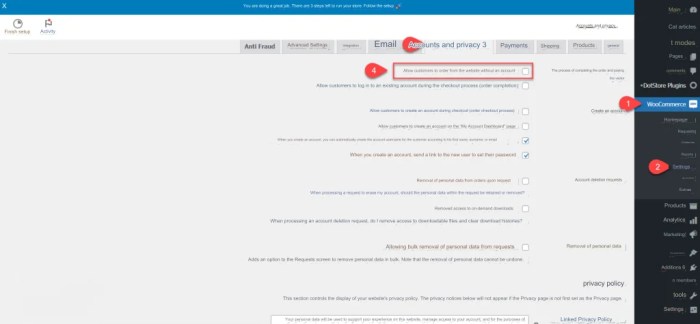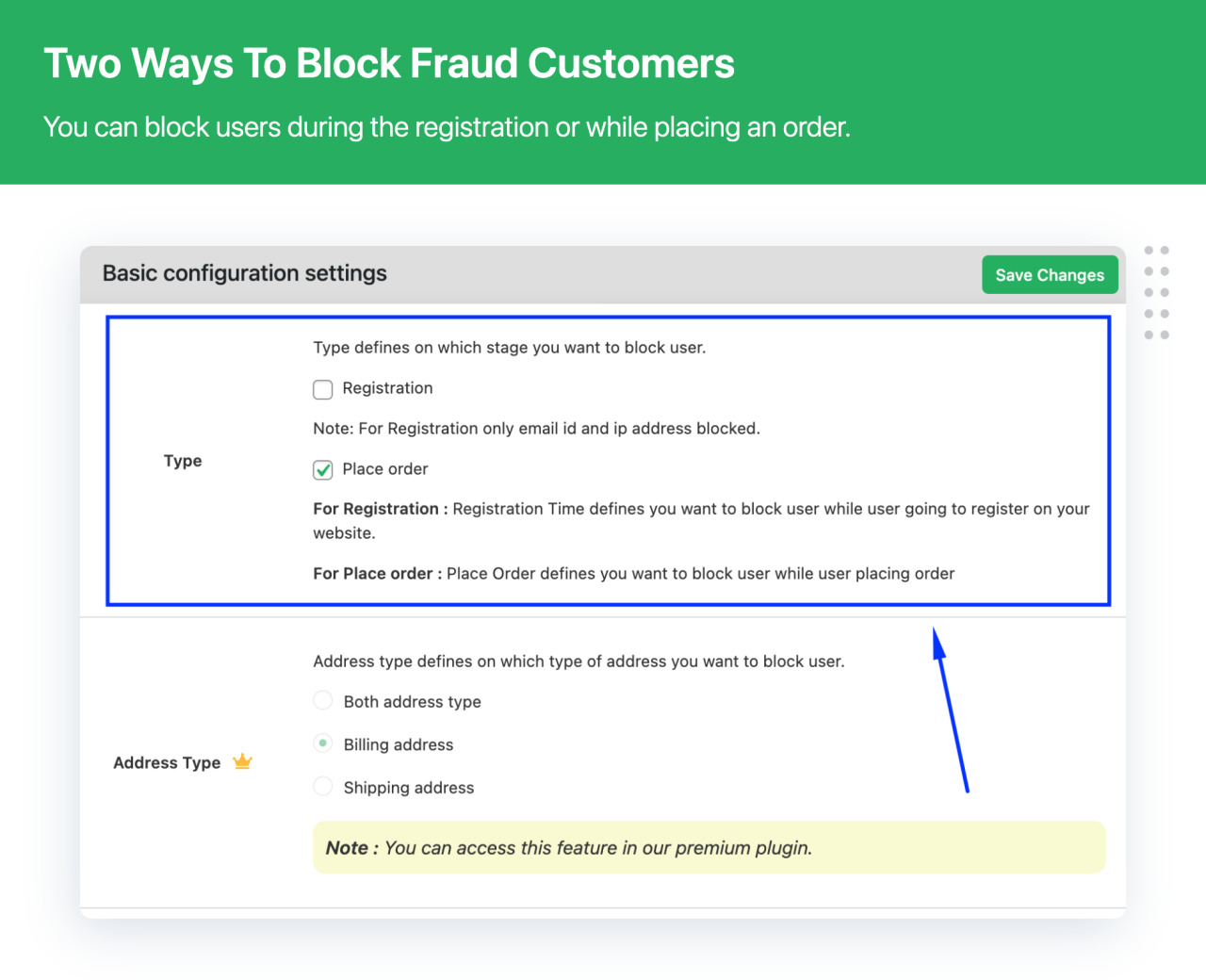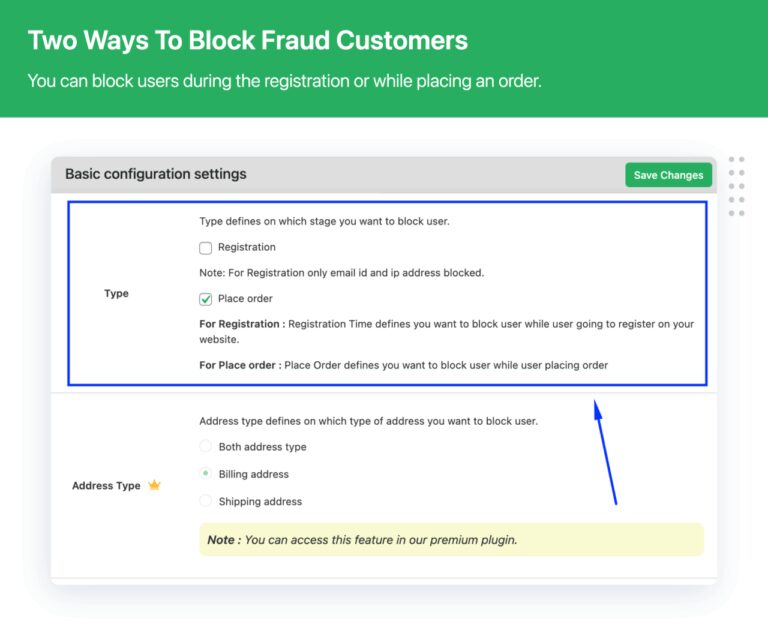How to prevent fraud and fake orders in WooCommerce is crucial for any online store. It’s not just about protecting your revenue; it’s about safeguarding your brand reputation and building trust with your customers. This comprehensive guide dives into various strategies, from validating orders to securing payments and managing customer accounts. We’ll explore effective methods to identify suspicious activity and implement robust security measures to combat fraud, ensuring a smooth and secure shopping experience for everyone.
This in-depth look at order validation, payment security, customer account management, order tracking, shipping, and customer support will arm you with practical steps to fortify your WooCommerce store against fraudulent activities. We’ll examine various techniques, tools, and best practices to protect your business and maintain a trustworthy online presence. We’ll even provide some helpful tables to compare different methods and tools.
Order Validation and Screening
Protecting your WooCommerce store from fraudulent orders requires a proactive approach. Simply relying on customer input isn’t enough. Robust validation and screening processes are crucial to identify and prevent suspicious activity, safeguarding your business from financial loss and reputational damage. This involves meticulously examining order details, customer data, and potential patterns to distinguish genuine transactions from fraudulent ones.Order validation and screening isn’t a one-size-fits-all solution; it demands a tailored approach.
It’s about creating layers of defense, each designed to detect different types of fraud. From analyzing IP addresses to checking geolocation data, a multi-faceted approach is vital to minimize the risk of fraudulent activity.
Validating Order Details Against Customer Data and Past Order History
Accurate order details are the first line of defense against fraudulent activity. By comparing order details with customer profiles and past purchase history, you can identify discrepancies and red flags. For example, an order for a large quantity of high-value items from a customer with a history of small, infrequent purchases might raise suspicion. This proactive comparison can help prevent unauthorized access to your store’s inventory.
Detecting Suspicious Order Patterns or Anomalies
Suspicious order patterns are often the telltale signs of fraudulent activity. Look for unusual order volumes, sudden surges in orders from new customers, or orders with inconsistent shipping addresses. Consider the frequency and volume of orders. For example, a customer placing multiple orders in rapid succession for products outside their typical purchasing behavior could trigger an alert.
Keeping your WooCommerce store safe from fraudulent orders is crucial. Implementing robust order verification methods, like IP address checks and advanced payment gateway integrations, is a good first step. However, with AI costs dropping a staggering 280x in just 18 months, this opens up exciting possibilities for marketers to use AI-powered tools to identify suspicious activity, leading to even more sophisticated fraud prevention strategies.
Ultimately, staying ahead of the curve requires a multi-faceted approach to order security in your WooCommerce store.
A consistent pattern of such orders should be investigated.
Flagging Potentially Fraudulent Orders
A clear system for flagging potentially fraudulent orders is essential. Implement a workflow that identifies and isolates suspicious transactions for review. This process should involve a combination of automated checks and human intervention. For instance, orders that fail multiple validation checks should be flagged automatically for manual review. Automated alerts can save time and resources, enabling swift intervention and minimizing losses.
Comparing Order Information Against Known Fraud Databases or Blacklists
Utilizing fraud databases and blacklists is a critical part of order validation. These databases contain information about known fraudsters and suspicious activity. Integrating this data into your order processing system allows you to quickly identify and block orders from these individuals. By regularly updating your fraud database, you can maintain a robust defense against emerging fraud tactics.
For instance, if an order originates from an IP address on a known fraud blacklist, it should be flagged immediately.
Verifying Customer Information Accuracy
Ensuring the accuracy of customer information is paramount. Inaccurate or incomplete information can lead to mismatched data and missed fraud alerts. Implement a robust process to verify customer information, including email addresses, phone numbers, and billing addresses. This could involve sending verification emails or using third-party services to check for discrepancies. Accurate customer data is the cornerstone of a strong order validation system.
Different Types of Order Validation Checks, How to prevent fraud and fake orders in woocommerce
Various techniques can be employed to validate orders and prevent fraud. The effectiveness of these methods can vary depending on the specific context and nature of the fraudulent activity.
IP Address Validation
IP address validation involves checking the origin of the order against known malicious IP addresses or ranges. A high volume of orders originating from a single IP address, especially if associated with known fraud patterns, should be flagged.
Keeping your WooCommerce store safe from fraudulent orders is crucial, and a strong security strategy can also boost your search engine rankings. Implementing robust verification processes, like checking order details against your customer database and using IP address geolocation, can help you identify suspicious activity. This proactive approach not only prevents fraudulent purchases but also improves your overall online reputation.
To further enhance your store’s visibility, consider learning how to optimize your site for search engines, like rank higher on google. Ultimately, a well-protected store that prioritizes security will have a positive impact on both your customer experience and your search engine rankings.
Geolocation Validation
Geolocation validation uses a customer’s location to identify potential discrepancies. An order from a customer in a different region than their billing address, or from a region where your business doesn’t typically operate, could be suspicious.
Device Fingerprinting
Device fingerprinting involves analyzing various characteristics of the device used to place the order, including browser type, operating system, and device model. This method can detect anomalies in order patterns or unusual device usage.
Comparison of Order Validation Techniques
| Technique | Effectiveness | Implementation Complexity |
|---|---|---|
| IP Address Validation | High | Medium |
| Geolocation Validation | Medium | Low |
| Device Fingerprinting | High | High |
Payment Security and Fraud Prevention

Protecting your WooCommerce store from fraudulent activity is crucial for building trust with customers and safeguarding your business. Robust payment security measures go beyond simply accepting payments; they involve proactive strategies to identify and mitigate potential threats. Implementing secure payment gateways and advanced fraud prevention tools are essential components of a comprehensive approach.Secure payment gateways are the first line of defense against fraudulent transactions.
They provide encryption and authentication protocols to protect sensitive customer data during the payment process. Implementing advanced fraud prevention tools is critical for identifying suspicious patterns and blocking potential fraud attempts. This proactive approach significantly reduces the risk of fraudulent orders and chargebacks. Furthermore, continuous monitoring of payment transactions for suspicious activity, along with effective dispute and chargeback handling strategies, will significantly enhance your store’s security posture.
Secure Payment Gateway Integration
Integrating secure payment gateways is a cornerstone of fraud prevention. This involves selecting a reputable gateway with robust fraud prevention features and configuring it correctly within your WooCommerce store. Proper setup ensures that transactions are handled securely and that sensitive data is protected. The chosen gateway should offer encryption, data validation, and robust authentication protocols to minimize vulnerabilities.
Advanced Fraud Prevention Tools
Utilizing advanced fraud prevention tools or plugins is an effective way to proactively identify and mitigate potential fraud. These tools often analyze various factors, including IP addresses, order history, and payment methods, to flag suspicious transactions. This proactive approach helps reduce the risk of fraudulent orders and minimize losses. Integrating these tools with your WooCommerce store can significantly improve your overall security posture.
Monitoring Payment Transactions
Establishing a system for monitoring payment transactions for suspicious activity is a critical aspect of proactive fraud prevention. This involves analyzing transaction data for anomalies, such as unusual order amounts, shipping addresses, or payment methods. A robust monitoring system can flag potential fraudulent activity, allowing you to take immediate action to prevent losses. Implement alerts and notifications for unusual patterns to enable quick intervention.
Handling Disputes and Chargebacks
Effective dispute and chargeback handling is essential for minimizing losses from fraudulent transactions. Develop a clear and efficient process for addressing disputes and chargebacks. This involves carefully reviewing each case, gathering evidence, and taking appropriate action. A streamlined process for handling disputes can minimize the financial impact of fraudulent activity and maintain customer trust. Implementing clear communication protocols and efficient dispute resolution strategies are key components.
Security Measures
Implementing security measures like CAPTCHAs and other security tools can help deter automated fraud attempts. CAPTCHAs (Completely Automated Public Turing test to tell Computers and Humans Apart) are an effective way to distinguish between human and automated users. They make it harder for bots and scripts to place orders. Consider incorporating additional security measures such as strong password requirements and two-factor authentication.
These measures add an extra layer of security, protecting your store and customers.
Examples of Payment Gateways and their Fraud Prevention Features
| Payment Gateway | Fraud Prevention Features | Security Ratings |
|---|---|---|
| Stripe | Advanced fraud detection, chargeback management, and transaction monitoring | Excellent |
| PayPal | Robust fraud protection, dispute resolution, and buyer protection | Very Good |
| Square | Transaction monitoring, security protocols, and risk assessment tools | Good |
Customer Account Management
Protecting your WooCommerce store from fraudulent activities extends beyond just transaction verification. Robust customer account management plays a crucial role in preventing account takeovers and maintaining a secure environment for legitimate customers. Implementing strong account security measures is paramount to preserving trust and safeguarding your business’s reputation.Effective customer account management goes hand-in-hand with preventing fraud. By implementing rigorous verification processes, enforcing strong password policies, and monitoring user activity, you can proactively identify and mitigate risks associated with malicious actors.
This proactive approach allows for early detection of suspicious activity, safeguarding your store’s integrity and protecting your customers’ data.
Verifying Customer Identities
Thorough customer identity verification is essential for reducing the risk of fraudulent accounts. Implementing a multi-layered verification process can significantly enhance security. This includes requiring customers to provide valid identification documents, like government-issued IDs, and matching this information against publicly available databases. Employing advanced verification tools, such as automated checks against known fraud databases, further bolsters your security measures.
Enforcing Strong Password Policies
Strong password policies are a cornerstone of robust account security. Requiring complex passwords, incorporating a minimum length requirement, and enforcing regular password changes are critical steps. The use of password managers, while not a policy, can be encouraged. These managers help users create and store secure passwords, making it easier for them to adhere to strong password standards.
Furthermore, educating customers on the importance of strong passwords is a crucial element of this process.
Managing User Accounts and Reviewing Unusual Account Activities
Proactive account management is essential to detect and prevent fraudulent activity. Establish a system for regularly reviewing user accounts, looking for unusual patterns in login attempts, order frequency, or geographic location. This proactive approach enables the swift identification of potential threats. Implementing an alert system to flag unusual account activities is crucial. This alerts staff to investigate potentially fraudulent activity promptly.
A detailed log of user activities is essential for effective account management.
Importance of Regular Account Reviews and Monitoring
Regular account reviews are vital for maintaining a secure environment. Scheduled account reviews should be implemented to identify suspicious patterns. This systematic approach allows for the prompt detection of any anomalies. Implementing automated tools for monitoring user activities is highly beneficial in ensuring efficient and timely detection of suspicious behavior. This systematic monitoring should also include a regular check for accounts with minimal activity.
Implementing Two-Factor Authentication
Two-Factor Authentication (2FA) adds an extra layer of security to user accounts. This critical security measure significantly reduces the risk of unauthorized access. Requiring a second form of verification, such as a code sent to a mobile device, makes it substantially harder for attackers to gain access even if they obtain a user’s password. This extra security measure safeguards against password theft and unauthorized login attempts.
Handling Customer Complaints and Addressing Potential Issues
A robust customer support system is crucial for resolving disputes and addressing customer concerns. This approach ensures a smooth customer experience and safeguards against potential issues. Establishing a clear process for handling customer complaints and disputes is essential for maintaining a positive reputation. Providing prompt and effective responses to customer inquiries and issues is crucial for building trust.
An efficient customer support system contributes significantly to minimizing potential conflicts.
Best Practices for Account Security
- Regularly update security protocols and software to address emerging threats.
- Implement a system for verifying customer identities through multiple channels.
- Use strong password policies and educate customers about password security.
- Monitor user activity for unusual patterns and flag potential threats.
- Establish clear procedures for handling customer complaints and disputes.
- Regularly review account security measures and adjust them as needed.
Order Tracking and Monitoring
Staying on top of your WooCommerce orders is crucial for preventing fraud and ensuring smooth operations. Real-time order tracking allows you to identify potential issues early, react quickly to delays, and maintain transparency with your customers. This proactive approach significantly reduces the risk of chargebacks, returns, and customer dissatisfaction.Effective order tracking goes beyond simply showing the current status.
It’s about having a system that provides insights into potential problems, flags unusual activity, and allows for swift responses. A well-designed order tracking system acts as a vital tool in your fraud prevention arsenal.
Order Status Tracking Methods
Monitoring order status is a fundamental aspect of order tracking. Different methods exist for achieving this, each with its own strengths and weaknesses. Implementing a system that combines these approaches offers a comprehensive view of your order lifecycle. Utilizing multiple methods enhances your ability to identify and resolve discrepancies efficiently.
- Real-time order status updates within WooCommerce are crucial. This allows for immediate visibility into order processing, shipping, and delivery. These updates should be accessible through the WooCommerce dashboard, allowing you to easily track order progress and identify potential delays or issues.
- Employing third-party order management tools can significantly enhance your tracking capabilities. These tools often provide more advanced features, such as automated alerts, detailed order history, and integration with other business systems. Some examples include ShipBob, which allows for extensive control over inventory, order processing, and shipping.
Identifying Discrepancies
Discrepancies in order information can signal potential fraud or issues. Proactively identifying these anomalies is key to preventing financial losses and maintaining customer satisfaction.
- Regularly review order data for unusual patterns or inconsistencies. This includes examining order details, shipping addresses, payment methods, and customer account history. Looking for discrepancies in expected delivery times, shipping methods, or order amounts can be helpful in spotting potential issues.
- Implement a system to flag orders that deviate from typical patterns. For example, if a large number of orders originate from a single IP address or if orders are placed with unusually high frequencies, those orders could be flagged for investigation. Developing custom scripts or utilizing plugins that scan order data for specific characteristics can help achieve this.
Automated Alerts for Unusual Activity
Automated alerts can notify you of unusual order activity, enabling rapid responses to potential fraud or errors.
- Setting up alerts for orders exceeding a certain value or originating from an unfamiliar region can help you catch suspicious activity. You can also set alerts for orders with inconsistent payment information or shipping addresses.
- Configure alerts to notify you about delayed orders or orders that have not been shipped within a specified timeframe. This will help in proactive communication with customers and handling issues promptly.
Order Activity Logging and Review
Comprehensive logging of all order activities provides a historical record for analysis and potential future reference. Reviewing this data allows you to identify trends, improve processes, and prevent future issues.
- Implement a system to record every action related to an order, including order placement, payment processing, shipping updates, and customer interactions. This comprehensive log will provide valuable insight into order fulfillment and potential problem areas.
- Regularly review the order activity logs to identify patterns or anomalies. Analyze trends in order volume, shipping delays, or customer complaints to identify areas for improvement.
Order Tracking Systems
Various order tracking systems are available, each with specific functionalities to cater to different needs. Selecting the right system depends on your business size, order volume, and budget.
| Order Tracking System | Functionality |
|---|---|
| ShipBob | Advanced order management, inventory control, and shipping integration. |
| Shopify’s Order Management | Robust order tracking with features for managing multiple channels and shipping. |
| WooCommerce Order Tracking Plugins | Specific plugins to improve WooCommerce order tracking with features tailored for WooCommerce stores. |
Handling Delayed or Undelivered Orders
A robust system for handling delayed or undelivered orders is essential to maintaining customer satisfaction.
- Establish a clear protocol for communicating with customers about order delays. Prompt and transparent communication helps manage expectations and build trust.
- Provide options for customers to track their orders in real-time. This transparency minimizes frustration and allows customers to easily follow the progress of their order.
Customer Communication
Maintaining clear communication with customers about order status is crucial for building trust and reducing frustration. This includes keeping customers informed about potential delays or issues.
- Use automated email notifications to keep customers updated on their order status, including any changes or delays. Provide clear and concise information about the order status.
- Provide multiple channels for customer communication, such as email, phone, or live chat. This allows customers to easily contact you if they have questions or concerns about their orders.
Using Order Management Tools
Leveraging order management tools can significantly streamline your order tracking and monitoring processes.
Preventing fraudulent orders in WooCommerce can be tricky, but a robust system is key. Things like order reviews, IP address checks, and automated fraud detection systems can help. While this is important, it’s interesting to see how things like Google traffic can affect YouTube recommendations, which is explored in depth here: does google traffic affect youtube recommendations what to know.
Ultimately, focusing on strong security measures in your WooCommerce store is crucial to maintain trust and avoid costly losses.
- Order management tools offer real-time visibility into your orders, providing you with insights into order processing, shipping, and delivery. This enables you to react quickly to potential issues and maintain transparency with your customers.
- These tools can automate various tasks, such as sending order updates, generating reports, and handling customer inquiries, freeing up your team to focus on other critical aspects of your business.
Shipping and Logistics
Shipping fraud is a significant threat to e-commerce businesses. Protecting your business from fraudulent returns, incorrect shipping information, and stolen packages requires a multi-pronged approach. Robust shipping procedures, coupled with vigilant monitoring, are crucial to maintain trust with customers and safeguard your bottom line.Shipping processes often present opportunities for fraud, from manipulated addresses to outright theft. Implementing secure shipping practices is a critical component of a comprehensive fraud prevention strategy.
These practices must be seamlessly integrated with your existing order fulfillment system to create a robust and resilient system.
Verifying Shipping Addresses
Thorough address verification is essential to prevent fraudulent orders. Use reputable address verification services that check for inconsistencies and potential inaccuracies in the provided shipping addresses. These services often employ algorithms and databases to flag potential issues, such as high-risk zip codes or unusual address formats. Integration of such services into your order processing system will help you identify and reject potentially fraudulent orders before they reach the shipping stage.
Managing and Monitoring Shipments
Real-time tracking of shipments is vital for monitoring and resolving potential issues. Employ carrier APIs to automatically update order status and track shipments. Automated alerts for delays, potential issues, or missing packages are paramount for prompt intervention. This proactive approach minimizes the risk of package loss or damage and allows you to quickly address any discrepancies.
Using Carrier APIs for Tracking and Validation
Carrier APIs provide a direct line to shipment data. These APIs allow you to automate tracking updates, enabling real-time visibility into the location of packages. Validating shipment information against order details, including addresses and tracking numbers, is crucial. Implementing automated checks can help identify discrepancies early and prevent delays or errors.
Handling Discrepancies in Shipping Information
Discrepancies in shipping information, such as incorrect addresses or unauthorized changes, can lead to delays or lost packages. Establish clear procedures for handling these discrepancies. This includes processes for contacting customers, verifying information, and coordinating with carriers. A well-defined workflow is crucial to swiftly address any issues and prevent further complications.
Working with Reputable Shipping Carriers
Partnering with reputable shipping carriers is essential for reliable and secure shipping. These carriers often have advanced fraud detection systems and robust security protocols in place. Conduct due diligence and research carriers’ reputations for handling fraudulent activities and package security. This ensures a level of trust and minimizes the risk of loss or theft.
Implementing a Secure Shipping Process
Implementing a secure shipping process involves a combination of factors. Establish clear communication channels with carriers, and implement robust tracking systems. Employ encryption to protect sensitive shipping data and utilize secure packaging to protect packages from theft. Implement a system to identify high-risk shipments and ensure secure handling of these packages.
Shipping Carrier Security Features
| Shipping Carrier | Security Features | Reliability |
|---|---|---|
| UPS | Tracking, fraud detection, package verification | Excellent |
| FedEx | Advanced tracking, security measures, package insurance | Very Good |
| USPS | Tracking, delivery verification, signature confirmation | Good |
Customer Support and Reporting: How To Prevent Fraud And Fake Orders In Woocommerce
Effective customer support is crucial for mitigating fraud risks and building trust. A well-structured support system can address customer concerns promptly, gather valuable feedback, and ultimately reduce the likelihood of fraudulent activities. This section Artikels procedures for handling customer inquiries, collecting feedback, and escalating suspicious activity to the appropriate authorities.Customer support plays a critical role in building a positive customer experience, particularly when dealing with sensitive issues like suspected fraud.
Providing a clear and consistent approach to handling customer inquiries is essential for managing expectations and maintaining trust. Proactive communication, coupled with well-defined reporting procedures, empowers customers and protects the business from potential financial losses.
Handling Customer Inquiries about Fraud Prevention
A dedicated customer support channel, like an email address or a specific phone line, should be established for fraud-related inquiries. This ensures that customers feel confident and comfortable reaching out when they suspect fraudulent activity. Training support staff to recognize and respond appropriately to these inquiries is vital. This includes providing them with clear guidelines on what constitutes suspicious activity, how to document the details, and the steps to escalate the issue if necessary.
Collecting and Analyzing Customer Feedback on Fraud Prevention Efforts
Regularly soliciting customer feedback on fraud prevention efforts is critical for continuous improvement. This feedback can highlight areas where the process can be strengthened, identify weaknesses in the system, and demonstrate a commitment to customer safety.Methods for collecting feedback include:
- Surveys: Online surveys can be used to gauge customer satisfaction with the fraud prevention procedures in place. These surveys should include specific questions about the effectiveness of communication, the clarity of the information provided, and the ease of reporting suspicious activities.
- Feedback Forms: Provide feedback forms on the website or within order confirmation emails to gather customer input on the steps they took and their experiences.
- Customer Service Interactions: Monitor customer service interactions to identify recurring themes or concerns related to fraud prevention. Support agents should be trained to actively solicit feedback and document it in a structured manner.
Analyzing the feedback is crucial for identifying patterns, understanding customer needs, and refining strategies for fraud prevention. Tracking the frequency of certain concerns and using this data to adjust policies and procedures demonstrates a proactive approach to customer safety.
Creating Effective Support Documentation
Clear and concise documentation is essential for supporting customer inquiries and educating them on fraud prevention.
- Frequently Asked Questions (FAQ) Page: A dedicated FAQ page on the website can address common questions about fraud prevention, reducing the need for support agents to answer repetitive inquiries. Include specific examples of fraudulent activities and the steps customers should take if they encounter them.
- Knowledge Base Articles: Develop articles explaining the company’s fraud prevention policies and procedures. Include screenshots, diagrams, and step-by-step instructions where necessary.
- Order Confirmation Emails: Include clear instructions for reporting suspicious activities in the order confirmation email, along with links to the company’s fraud prevention policy.
Thorough documentation helps customers understand the process and empowers them to identify and report suspicious activities proactively.
Importance of Proactive Communication to Customers
Maintaining open communication with customers regarding fraud prevention is crucial. This builds trust and helps customers feel safe and supported.
- Regular Updates: Inform customers about changes in fraud prevention policies or procedures through newsletters, email updates, or announcements on the website. This demonstrates transparency and responsiveness.
- Clear Communication Channels: Ensure customers have multiple avenues for contacting support, such as email, phone, or live chat. This improves accessibility and allows customers to choose the method that best suits their needs.
- Personalized Support: Provide tailored responses to customer inquiries, addressing their specific concerns and guiding them through the process of reporting potential fraud.
Proactive communication fosters a sense of security and confidence among customers, which directly contributes to a positive customer experience.
Reporting Suspicious Activities to the Appropriate Authorities
A robust system for reporting suspicious activities to the relevant authorities is essential.
- Clear Procedures: Establish clear procedures for escalating suspicious orders or activities to the appropriate authorities, such as law enforcement or payment processors.
- Designated Contact Person: Assign a designated contact person or team responsible for coordinating reports with the relevant authorities.
- Documentation Requirements: Develop a comprehensive process for documenting all suspicious activities, including order details, customer information, and supporting evidence.
This ensures that fraudulent activities are addressed effectively, and legal processes are followed.
Handling Customer Disputes Related to Fraudulent Orders
Handling customer disputes related to fraudulent orders requires a fair and transparent process.
- Mediation and Resolution: Implement a process for mediating disputes, providing clear guidelines to both customers and the business, ensuring a timely resolution for legitimate complaints.
- Dispute Resolution Policy: Create a detailed dispute resolution policy that Artikels the steps involved in resolving disputes, including the roles and responsibilities of various parties.
- Customer Communication: Maintain open communication with customers throughout the dispute resolution process, keeping them informed of the progress and expected timeline.
A well-defined process for handling disputes reduces customer frustration and maintains a positive reputation.
Closure

In conclusion, safeguarding your WooCommerce store from fraud requires a multi-faceted approach. By implementing the strategies discussed—from meticulous order validation to secure payment gateways and proactive customer support—you can significantly reduce the risk of fraudulent activity. Remember, prevention is key. Regularly reviewing and updating your security protocols will ensure your online store thrives in a secure environment, and your customers have a pleasant experience.





